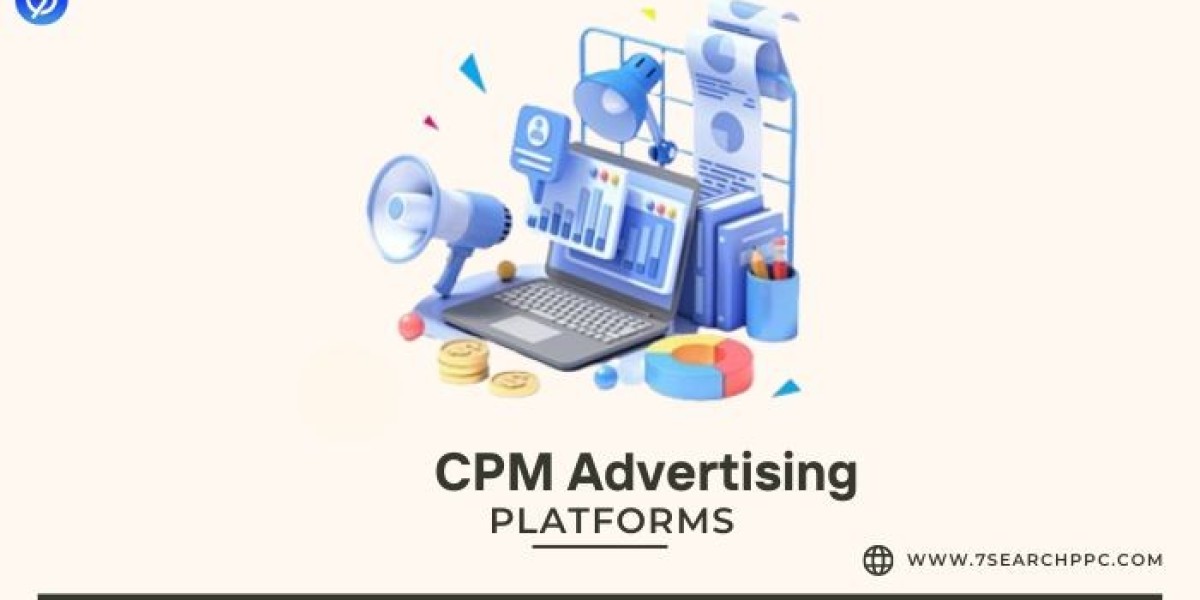In the dynamic realm of digital marketing, understanding the various advertising models is crucial for businesses aiming to maximize their ROI. Among these, CPM advertising (Cost Per Mille) has emerged as a key player, offering unique advantages for brand visibility and awareness. In this comprehensive guide, we’ll explore the ins and outs of CPM advertising, its benefits, strategies for effective implementation, and how it compares to other advertising models like CPC and CPA.
What is CPM Advertising?
CPM advertising refers to a pricing model where advertisers pay for every thousand impressions their ads receive. The term "mille" is Latin for "thousand," so when you see CPM, it essentially means "cost per thousand impressions." This model is prevalent in display advertising, where the goal is often to enhance brand visibility rather than generate immediate clicks or conversions.
The Role of Impressions in CPM Ads
Impressions are a critical metric in digital marketing, representing how many times an ad is displayed, regardless of whether users interact with it. CPM ads are designed to optimize visibility and reach, making them an excellent choice for brand-building campaigns.
The Mechanics of CPM Advertising
How CPM Ads Operate
When you run a CPM ad, you establish a budget based on the number of impressions you want to achieve. For example, if your CPM rate is $10, you will pay $10 for every 1,000 times your ad is shown. This model allows advertisers to predict costs and measure the effectiveness of their campaigns in terms of visibility.
Platforms and CPM Ad Networks
Many platforms and CPM ad networks facilitate the buying and selling of CPM ads. Some notable examples include:
Google Display Network: A vast platform that reaches millions of websites, allowing for extensive brand exposure.
Facebook Ads: Offers advanced targeting options to reach specific audiences based on their interests and behaviors.
AdRoll: Specializes in retargeting, helping businesses reconnect with visitors who didn’t convert initially.
Utilizing these networks allows advertisers to tap into their extensive reach and sophisticated targeting capabilities.
Benefits of CPM Advertising
Enhanced Brand Awareness
One of the most significant advantages of CPM advertising is its focus on brand awareness. Businesses looking to establish or reinforce their presence in the market can benefit immensely from CPM ads. By prioritizing visibility, brands can effectively reach a larger audience and increase overall recognition.
Cost-Effectiveness
Compared to other models, such as CPC advertising (Cost Per Click), CPM advertising can be more cost-effective for those prioritizing brand visibility. While CPC charges for each click on the ad, CPM allows advertisers to focus on impressions, making it easier to control costs.
Predictable Budgeting
Another advantage of CPM advertising is the ability to predict spending accurately. Since costs are based on impressions, advertisers can set clear budgets and measure how effectively they are using their resources.
Comparing CPM with CPC and CPA Advertising
What is CPC Advertising?
CPC advertising focuses on driving traffic through clicks. Advertisers only pay when someone clicks on their ad. This model is ideal for campaigns that prioritize direct engagement and measurable results.
Understanding CPA Advertising
CPA advertising (Cost Per Acquisition) is geared toward advertisers who wish to pay only for actual conversions or actions taken by users. This model is advantageous for businesses focused on driving sales or lead generation.
When to Use Each Model
CPM Advertising: Best suited for campaigns aimed at increasing brand awareness and visibility.
CPC Advertising: Ideal for driving targeted traffic and direct engagement with potential customers.
CPA Advertising: Appropriate for performance-driven campaigns where conversion rates are the primary focus.
Strategies for Effective CPM Marketing
Targeting the Right Audience
To maximize the effectiveness of your CPM advertising campaigns, precise audience targeting is essential. Leverage demographic, geographic, and psychographic data to ensure your ads reach the right people. Platforms like Google Ads and Facebook provide robust targeting options to help you connect with your audience effectively.
Creative Ad Design
The design of your CPM ads significantly impacts their performance. Eye-catching visuals, compelling headlines, and clear calls to action are crucial elements. Consider experimenting with different ad formats—such as banner ads, video ads, and interactive content—to see which resonates best with your target audience.
A/B Testing for Optimization
Implementing A/B testing is a powerful way to identify which ads perform best. Experiment with various headlines, images, and calls to action to determine what drives the highest engagement and impressions. This data-driven approach enables you to refine your strategies and improve overall campaign effectiveness.
Monitor and Analyze Performance
Regularly monitor the performance of your CPM campaigns. Utilize analytics tools to assess metrics like impressions, engagement rates, and overall ROI. This data will guide you in refining your strategies and optimizing future campaigns for better results.
Common Challenges in CPM Advertising
Ad Blindness
Ad blindness occurs when users become desensitized to advertisements, leading to decreased engagement rates. To combat this, regularly refresh your ad creatives and implement rotation strategies to keep your audience interested and engaged.
Limited Tracking of ROI
Unlike CPC and CPA models, where tracking is straightforward through clicks and conversions, measuring ROI in CPM advertising can be more complex. Focus on metrics indicating brand visibility, such as reach and impressions, while also tracking user engagement on your website.
Competition and Ad Placement
In highly competitive markets, securing ad placements can be a challenge. Consider collaborating with a CPM ad network that specializes in your industry to improve your chances of being seen by your target audience.
The Future of CPM Advertising
Evolving Trends in Digital Marketing
As digital marketing continues to evolve, so does CPM advertising. The rise of programmatic advertising and artificial intelligence (AI) offers exciting opportunities for more targeted and efficient ad placements.
Integrating CPM with Other Advertising Models
Many advertisers are beginning to integrate CPM advertising with CPC and CPA models for a more comprehensive marketing approach. By combining brand awareness efforts with performance-driven campaigns, businesses can maximize their marketing effectiveness.
Conclusion
In conclusion, CPM advertising service as a powerful tool for businesses aiming to enhance brand visibility and reach a wider audience. By understanding its mechanics, advantages, and effective strategies for implementation, marketers can leverage CPM ads to achieve their goals. As the digital landscape continues to evolve, staying informed about emerging trends and best practices will be crucial for success in CPM marketing.
By strategically integrating CPM with other advertising models like CPC and CPA, businesses can create a balanced and effective marketing strategy that drives both awareness and conversions. The key to successful CPM advertising lies in knowing your audience, creating compelling ads, and continuously analyzing performance to optimize campaigns for the best possible results
FAQs About CPM Advertising(FAQs)
What is the difference between CPM and CPC?
Ans. CPM (Cost Per Mille) focuses on impressions, meaning you pay for every thousand times your ad is displayed. CPC (Cost Per Click), on the other hand, charges you only when someone clicks on your ad. CPM is better for brand awareness, while CPC is suitable for driving traffic.
How do I choose a CPM ad network?
Ans. When choosing a CPM ad network, consider factors like audience targeting capabilities, reach, pricing structure, and reporting features. Research different networks to find one that aligns with your business goals and target audience.
Is CPM advertising effective for small businesses?
Ans. CPM advertising can be effective for small businesses, especially those looking to build brand awareness. With proper targeting and creative strategies, small businesses can leverage CPM ads to reach a larger audience without breaking the bank.
How can I measure the success of my CPM campaigns?
Ans. To measure the success of your CPM campaigns, focus on metrics like impressions, reach, engagement rates, and overall brand visibility. Although tracking direct conversions can be more challenging, these metrics provide valuable insights into your campaign's effectiveness.
What industries benefit the most from CPM advertising?
Ans. Industries that prioritize brand awareness—such as consumer goods, fashion, technology, and entertainment—tend to benefit significantly from CPM advertising. However, any business aiming to increase its visibility can find value in this model.




